Dear Artist,
Caroline Morse, from Southern California, wrote, “I often find I am not satisfied with the brushwork. I may have pulled off a painting I am relatively satisfied with, except for the brushwork. It may be messy or scribbled looking close up. I have taken lots of classes and am at the point where I feel as if I have to figure out my own way now. Any advice?”
Thanks, Caroline. After studying the wide range of work on your website, I can see where you may be coming from. Your paintings, along with collages and photographs, are the picture of experimentation. I can also see where you may have been following along with an instructor and therefore pulling from their particular style and brushwork. I see lots of learning and your openness to discovering how paint and your tools work. Now, you long to distill your own voice into a recognizable hand.
The problem, perhaps, is that you may be attaching your feelings of satisfaction to the tightest work —— works you deem to possess the neatest brushwork. Consider for a moment that the most interesting work in your portfolio could be the work with a fresher and more personal attack, even if at times it feels messy or scribbly. For the purpose of our discussion, I’ve zeroed in on a few paintings from your “recent work” gallery, and plucked the pieces I feel are unique in subject and style. These paintings hold a point of view and surprising interpretation. Now, how to execute in such a way that you feel the brushwork meets a higher standard?
Let’s go back for a moment: What makes a great painting? Well, among so many measurable and ineffable factors, for one, your personal lens. My favourite here is Swans of Bewick. Why do I love it? Not merely an execution of your observations, a handy technical romp, or generic document, the painting emits a vibe that tells me about your wandering creative curiosity, the feeling of the beach —— which is also how I feel at the beach —— and maybe even your interior life. Can you see where I’m going here? At the risk of my being unhelpful in the immediate future, your brushwork, while aligned with the vibe of the work, with a few hundred or a few thousand more paintings, will improve. As your strokes grow increasingly assured, if not more perfect, they will emerge as the embodiment of your unique hand: experimental, communicative, daring, playful, human, curious, mutable, masterful and flawed —— their ultimate purpose to be ever more exciting as their own thing, to communicate the message of the picture and be a pleasure to look at.
Sincerely,
Sara
PS: “You have to play a long time to be able to play like yourself.” (Miles Davis)
Esoterica: Amateurish brushwork is a giveaway only of painters who haven’t painted enough, and those who refuse to let go of the comfort of their tighter, less daring, freshman chains. If you’re keen to figure out your own way, try this:
Pull from your portfolio, as I have, five paintings you feel are the “top.” They don’t need to be similar in style or execution. Choose quickly and from the thumbnails. Now, and only after you’ve made all your selections, examine the works closely and try to identify why they made the cut and how they can be stronger. Repaint one of them, going up a size in brush; choose brushes with a little firmness and pushback, like a stiff bright, a flat, and a fresh sable, so you can develop the key moves of edging, scumbling, blending, overlays, cutting in and counterpoint. Focus on confident, committed strokes, made only once, varying the pressure so as to produce a characteristic line and flat, fresh areas of pigment and surface interest. Once laid, leave your strokes alone. At the risk of sounding like a broken record, try to do this all in less than 30 minutes. Now, do it a few hundred more times. Like a quilter’s stitches, or a dumpling maker’s pinches, your strokes are the result of technical development, practice, courage, and personal flair. “An amateur practices something until he gets it right,” said American double bassist Barry Green. “A professional practices until he can’t get it wrong.”
Have you considered a Premium Artist Listing? With each letter, an artist is featured at the bottom of this page. The Premium Artist Listings are a means of connecting artist subscribers through their work. Proceeds from each listing contribute to the production of The Painter’s Keys.
“I believe that we learn by practice… it is the performance of a dedicated precise set of acts, physical or intellectual, from which come the shape of achievement, a sense of one’s being, a satisfaction of spirit.” (Martha Graham)
Featured Workshop
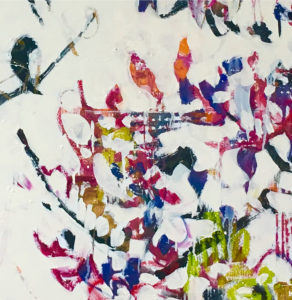 Join Ellie Harold for “Intuitive Painting: Permission to Paint Expressively,” designed especially for mature women artists of all skill levels who wish to explore this medium for soulful exploration. The retreat provides attractive accommodations (your own room!) along with lightly structured activities for centering, relaxation and low stress art-making. You’ll have plenty of free time to muse, paint, write and reflect while enjoying the colors, textures and flavors of San Miguel. This Retreat has the potential to transform not only your art but your life! You’ll return home with a specific art “care plan” to assure support for further creating. Details at www.EllieHarold.com.
Join Ellie Harold for “Intuitive Painting: Permission to Paint Expressively,” designed especially for mature women artists of all skill levels who wish to explore this medium for soulful exploration. The retreat provides attractive accommodations (your own room!) along with lightly structured activities for centering, relaxation and low stress art-making. You’ll have plenty of free time to muse, paint, write and reflect while enjoying the colors, textures and flavors of San Miguel. This Retreat has the potential to transform not only your art but your life! You’ll return home with a specific art “care plan” to assure support for further creating. Details at www.EllieHarold.com.
Featured Artist
Candace studied at the Ecole des Beaux Arts in Angers, France but it is her travels in the deserts of Africa and Oman, Antarctica and the Arctic, and sacred sights of Machu Picchu and Petra that serve as her true place of learning. A desire to combine these experiences with a deeper understanding of her own spirituality has provided the underlying focus and inspiration for her paintings.

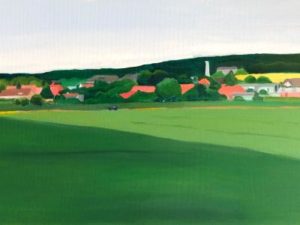
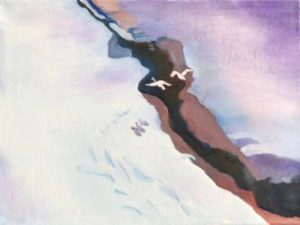
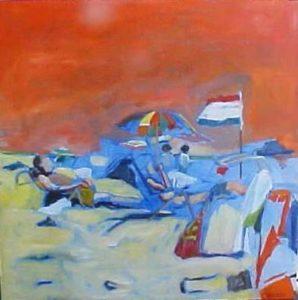
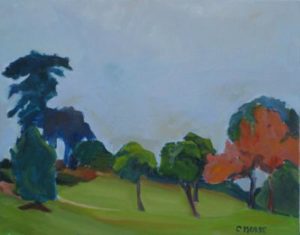




15 Comments
Great advice, as always! Thanks.
I love this insight. I recently read a comment from artist and curator Catherine Haggarty – “ The best work is work that is engaged, critical and reflective of the maker and of the time.” Seems to me you’ve expanded on that thought (significantly) here. Thanks Sara, and Caroline!
This one struck me through and through, Sara. Going through older paintings, hating earlier work, I took a couple watercolors to a workshop. A flagrant, quinacridone red flower got a wow from the workshop crowd, so I kept it. And began to paint fresh, vibrant colors in one take. The details will come after a few days of ignoring the new works. And Miles Davis and Martha Graham quoted here fit to a T!
Mary, thanks for tickling my memory of a Dick Frisbee critique of a Plein air floral. He smirked when he said “ that audacious red tulip hanging out with all those white tulips, isn’t that great fun!”
I like Carolyn’s paintings and their bold expression. I use to feel dissatisfied about my exuberant brushwork until I realized it was part of me and that is what makes for my authentic expression which I am after. I feel composition is the key. Keep up with your vibrant takes and the vibrant brushstrokes will follow. May you find purpose in your brush!
Sara may be onto something in suggesting that you ‘choose brushes with a little firmness and push-back’. I would suggest you go one step further and not use any of the brushes you’ve been using until now. Work with brushes you’re not so accustomed to. It’s a bit like riding someone else’s bicycle. The paintings shown here don’t tell me what size they are, and opening the thumbnails doesn’t provide a larger image. Perhaps you might try simply going to much larger canvases. This will translate as an increase in the sheer number of brush strokes required to complete the work. Overall, your paintings appear rather ‘flat’ and ‘lifeless’. There’s little difference in the dynamic of your skies and the ground. Perhaps you might undertake a simple experiment in perception using one of your paintings. And a flashlight. Look at the painting in a dark room using only the flashlight. Look at it from varying distances, including extremely closeup…..
Creating works over and over I that take only 30 minutes using larger brushes! That’s a great exercise!
I love “Summer Beach!”
Funny that this should be the topic this week. At the weekly zoom meeting of our art group we had a discussion regarding brush strokes, making smoother ones to be exact. There were several suggestions like; using different brushes, changing the consistency of the paint or use of medium while painting. When , and I agree, painting, painting and more painting is the key to developing ones skills as a painter.
Thanks for the ongoing weekly letters. I learn something new every week.
Maybe using knives would help break up habits and show you some new thinking.
I apparently didn’t put my website on the form. Sorry.
So good!!!
What a helpful and insightful resource. Many thanks.
Brushes do lose their spring. There’s nothing more off-putting and wonderfully creative than attempting a completely new and different subject matter in a medium unfamiliar to the artist. For me it was digging out those 30 year old watercolor trays and putting up bird feeders in all the windows.
Last evening, six yellow finches hung off one feeder in front of the magenta bougainvillea, while wild parrots squawked overhead. Just trying to DRAW the brown-red Towhees as they madly hovered in space reminded me of Nude Descending a Staircase.
Rather than recopying my old paintings with new brushes, I just got new brushes and a subject that moves so fast if I blink I miss it. What an exercise!
I like that idea.paint a quickly moving subject instead!